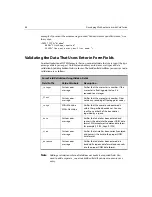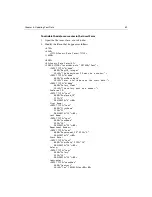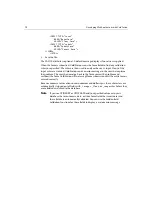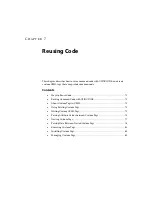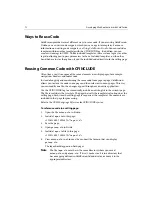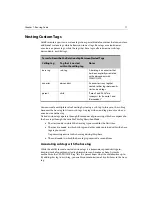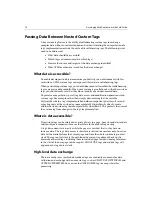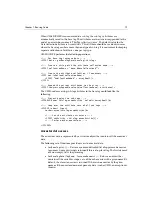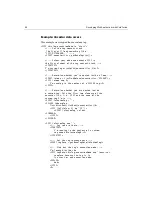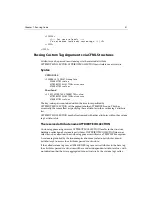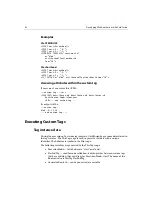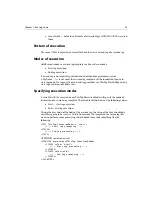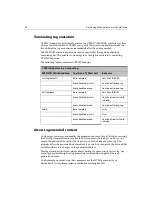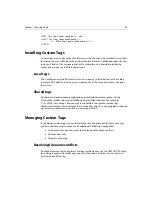
72
Developing Web Applications with ColdFusion
Ways to Reuse Code
ColdFusion provides several different ways to reuse code. If you are using ColdFusion
Studio, you can write code snippets, which you can copy into templates. For more
information on writing code snippets, see Using ColdFusion Studio. You can include a
template within another template with the CFINCLUDE tag. In addition, you can
create custom tags in CFML. Unlike included templates, these custom tags act as other
tags do, allowing you to pass parameters to them. Included templates, on the other
hand, behave just as though you typed the included code directly into the calling page.
Reusing Common Code with CFINCLUDE
Often times, you’ll use some of the same elements in multiple pages; for example,
navigation, headers, and footer code.
Instead of copying and maintaining the same code from page to page, ColdFusion
allows you to store the code in one page and then refer to it in many pages. This way,
you can modify one file; the changes appear throughout an entire application.
Use the CFINCLUDE tag to automatically include an existing file in the current page.
The file to include is the template. The page that calls the template is also known as the
calling page. Each time the calling page is requested, the template’s file contents are
included in that page for processing.
Refer to the CFML Language Reference for CFINCLUDE syntax.
To reference code in a calling page:
1.
Open the file
askemp.cfm
in Studio.
2.
Include
logo.cfm
in this page:
<CFINCLUDE TEMPLATE="logo.cfm">
3.
Save the page.
4.
Open
getemp.cfm
in Studio.
5.
Include
logo.cfm
file in this page:
<CFINCLUDE TEMPLATE="Logo.cfm">
6.
View
askemp.cfm
in a browser, then submit the form so that you display
getemp.cfm
.
The logo should appear on both pages.
Note
The file
logo.cfm
must be in the same directory where you saved
askemp.cfm
and
getemp.cfm
. If it isn’t, make sure it is in a directory that
has a mapping defined in ColdFusion Administrator, or move it to the
appropriate directory.
Summary of Contents for COLDFUSION 4.5-DEVELOPING WEB
Page 1: ...Allaire Corporation Developing Web Applications with ColdFusion ColdFusion 4 5...
Page 14: ...xiv Developing Web Applications with ColdFusion...
Page 26: ...xxvi Developing Web Applications with ColdFusion...
Page 34: ...8 Developing Web Applications with ColdFusion...
Page 70: ...44 Developing Web Applications with ColdFusion...
Page 84: ...58 Developing Web Applications with ColdFusion...
Page 114: ...88 Developing Web Applications with ColdFusion...
Page 148: ...122 Developing Web Applications with ColdFusion...
Page 174: ...148 Developing Web Applications with ColdFusion...
Page 208: ...182 Developing Web Applications with ColdFusion...
Page 244: ...218 Developing Web Applications with ColdFusion...
Page 274: ...248 Developing Web Applications with ColdFusion...
Page 288: ...262 Developing Web Applications with ColdFusion...
Page 300: ...274 Developing Web Applications with ColdFusion...
Page 350: ...324 Developing Web Applications with ColdFusion...
Page 362: ...336 Developing Web Applications with ColdFusion...











